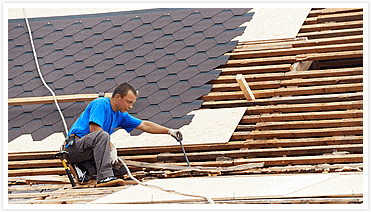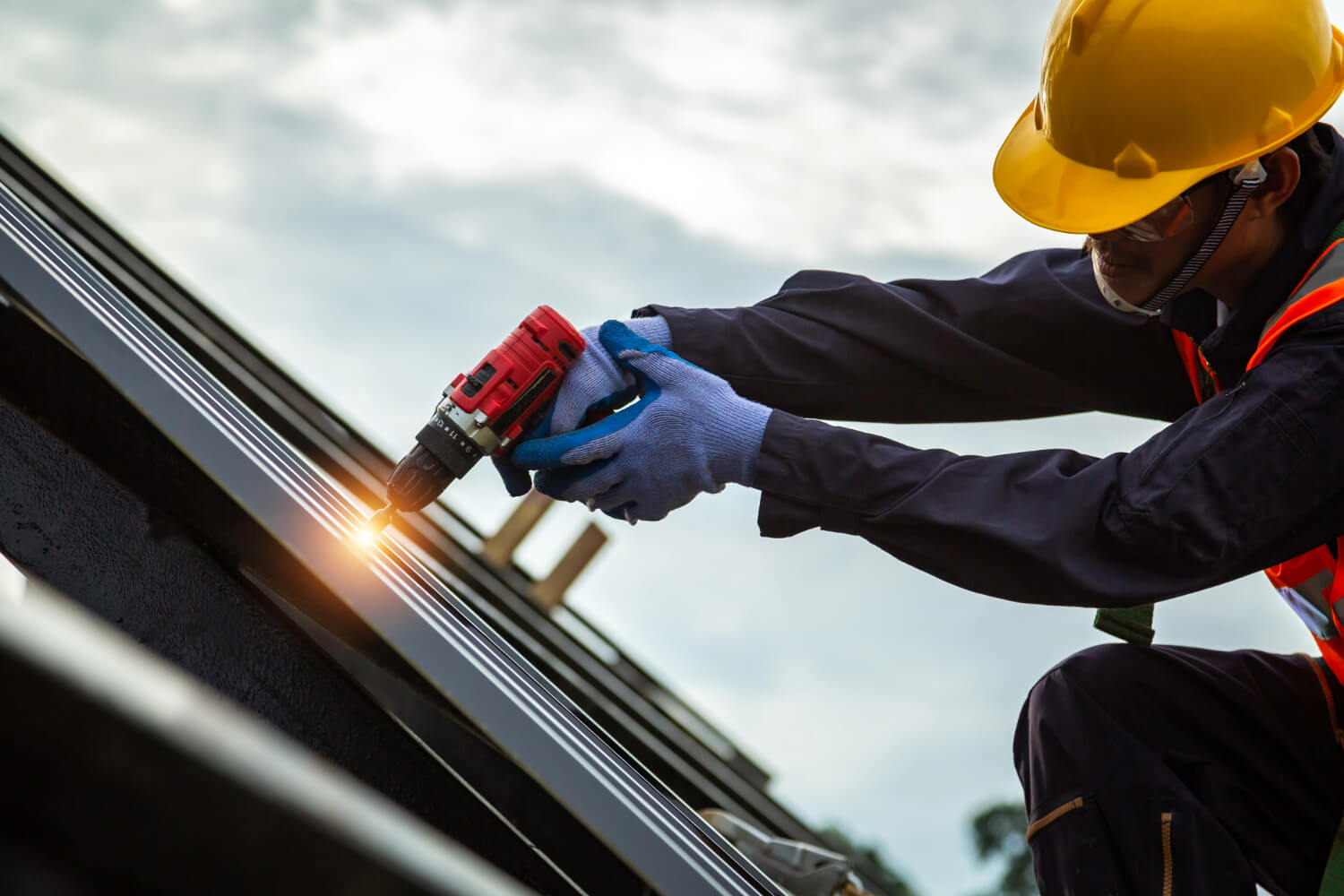A Comprehensive Guide to Effective Roof Apartment Roof Covering Installation
The details of flat roof covering setup demand a precise technique, starting with an extensive understanding of numerous flat roof types and the necessary products required for optimal efficiency. A successful installation hinges not only on the choice of materials but also on the prep work and implementation of each action included in the process.
Understanding Apartment Roofing System Kind
When thinking about level roofs, it is vital to understand the various kinds offered, as each deals distinct advantages and negative aspects tailored to details demands. One of the most common kinds of level roof coverings include Built-Up Roof (BUR), Changed Bitumen, and Single-Ply membranes.
Built-Up Roofing contains numerous layers of asphalt and gravel, offering excellent resilience and weather resistance. It is especially valuable in locations vulnerable to severe climate condition however may need even more maintenance due to its intricate construction.
Changed Asphalt is a popular option for its ease of installment and adaptability. It frequently utilizes a torch-applied or self-adhesive method, which can be helpful for fast repairs and long-lasting efficiency. Its lifespan can be much shorter contrasted to BUR.
Single-Ply membrane layers, consisting of Thermoplastic Olefin (TPO) and Ethylene Propylene Diene Monomer (EPDM), are acknowledged for their light-weight nature and power efficiency. These materials are often chosen for commercial structures as a result of their cost-effectiveness and convenience of installation (Cleveland Roofing Specialists). However, they might not give the exact same level of insulation as various other choices.
Each roof kind calls for mindful factor to consider based upon climate, spending plan, and certain task demands.
Important Materials for Apartment Roof
A variety of necessary materials are important for the effective installation of flat roof. The option of products directly impacts resilience, performance, and overall performance.
Among the primary products is the roof covering membrane, which can be constructed from various materials such as polycarbonate polyolefin (TPO), ethylene propylene diene monomer (EPDM), or PVC. Each type offers distinct benefits, including UV resistance and versatility, which are essential for prolonged efficiency.
Along with the membrane layer, insulation materials play a significant role in power efficiency. Rigid foam boards or polyisocyanurate insulation are popular options, as they offer excellent thermal resistance and wetness management.
Moreover, roofing adhesives and sealants are vital for ensuring a leak-proof installation. These items have to be compatible with the picked membrane to protect against damage over time.
Getting Ready For Installation
Correct preparation is essential for a successful level roof covering setup, as it prepares for a reliable and durable roofing system. Begin by conducting a complete inspection of the existing roof covering structure. Search for signs of damage, including leakages, rot, or inadequate water drainage, which might compromise the new roof. Guarantee that the underlying materials are sound and can sustain the weight of the brand-new roof covering components.
Following, collect all needed tools and products, guaranteeing that they meet sector criteria. This includes water-proof membranes, insulation, flashing, and bolts. Familiarize on your own with the manufacturer's requirements, as adherence to these guidelines is essential for guarantee functions.
Furthermore, guarantee that the work area is free from debris and blockages to help with safe and reliable installation. Take into consideration weather condition problems; prevent setup throughout heavy rain or severe temperature levels, which can impact material efficiency. Last but not least, inform any occupants of the building regarding the approaching job to ensure safety and minimize interruptions. By taking these preparatory actions, you can boost the chance of an effective flat roof setup that satisfies both visual and structural needs.
Step-by-Step Installation Refine
With the foundation developed with extensive prep work, the following phase includes carrying out the level roofing system installation methodically. This action is crucial for preserving the roof's honesty over time.
Complying with the vapor obstacle installment, set insulation boards, ensuring they fit continue reading this tightly together to decrease thermal bridging. Protect the insulation with ideal fasteners based on the roofing system type and local building regulations. Once the insulation remains in location, it's time to use the roofing membrane layer. Depending upon the picked material-- such as TPO, you can find out more EPDM, or changed asphalts-- install the membrane layer according to the producer's specs.
Make sure appropriate overlap at joints and edges to develop a water tight seal. Make use of adhesives, mechanical fasteners, or warm welding as called for. Install flashing around perimeters, vents, and any roofing system penetrations to boost waterproofing. After installment, perform a detailed inspection to identify any type of potential issues before ending the project, making certain a durable and reputable level roofing system.
Upkeep Tips for Longevity
Regular upkeep is important to ensure the durability and performance of a level roofing. Among the key tasks is to conduct regular inspections a minimum of twice a year, ideally in spring and loss. Throughout these examinations, seek signs of wear, such as sores, splits, or merging water, which can show underlying issues.

Ensuring correct water drainage is critical to stop water build-up. Inspect and clear seamless gutters, downspouts, and scuppers to ensure unobstructed water circulation. In addition, inspect seals around vents, skylights, and various other infiltrations for any type of indicators of degeneration, applying caulk find here or sealant as needed to keep a leak-proof barrier.
Lastly, think about expert upkeep solutions every few years for detailed evaluations and fixings. By sticking to these maintenance tips, you can considerably prolong the life of your flat roof covering, ensuring it remains a dependable shield versus the aspects.
Verdict
Effective flat roof covering installation requires a methodical technique encompassing complete examinations, material selection, and thorough preparation. Sticking to the detailed actions throughout the setup process guarantees the correct application of roof covering membranes and insulation while enhancing waterproofing with reliable flashing setup. In addition, applying regular maintenance methods significantly adds to the longevity of the roof. By adhering to these standards, a durable and dependable flat roofing solution can be attained, with the ability of standing up to numerous environmental problems.
The intricacies of flat roofing installation demand a careful technique, beginning with an extensive understanding of different flat roofing system types and the important products needed for optimum efficiency.Correct prep work is necessary for a successful level roofing installation, as it lays the foundation for a resilient and effective roof covering system. After installment, perform a detailed examination to determine any prospective issues prior to concluding the project, ensuring a dependable and durable level roof covering system.
